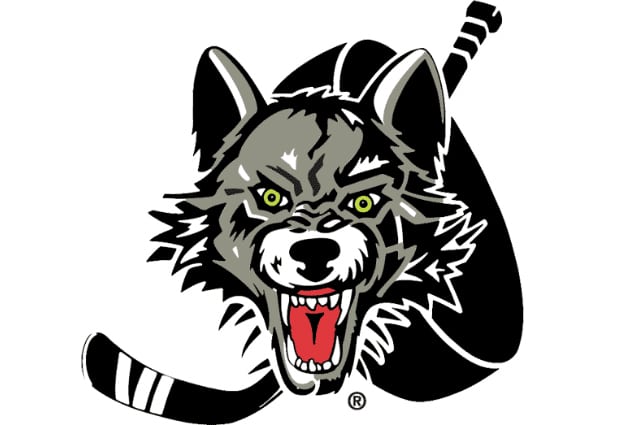
AHL Logo Ranking: No. 4 - Chicago Wolves
The Chicago Wolves logo is well on its way to becoming a classic, which is fitting for a team that is arguably one of the most successful minor league teams of the past 15 years. With an always-changing roster, the Wolves have managed to capture two Calder Cups and three Western Conference championships since 2001.
 AHL Logo Ranking: No. 4 - Chicago Wolves
AHL Logo Ranking: No. 4 - Chicago Wolves(The AHL has undergone a season of change and one-third of the league has changed locations or logos for the 2015-16 season. Leading up to the new season, The Hockey News will be ranking the logos of the league’s teams and offering a brief look at the history of each franchise. See the rest of the rankings in our AHL feed.)
The Chicago Wolves have been streaky when it comes to post-season appearances over the past decade and if recent history is any indicator, 2015-16 could be another year the Wolves miss the post-season.
Over the past seven seasons, the Wolves have bounced back and forth between a playoff club and one that’s close, but not quite there. Gone this season are half of the Wolves’ top-10 in scoring this past season, including team leader Shane Harper (32 goals, 50 points) who signed with the Florida Panthers. Other losses include Phillip McRae, Terry Broadhurst, Brett Regner and Rob Bordson.
Being the St. Louis Blues’ affiliate does have its perks, however. The Wolves could have 19-year-old prospect Ivan Barbashev in the lineup, as well as another season of Ty Rattie, the addition of defensemen Tommy Vannelli and power play quarterback Jordan Schmaltz.
The Blues have had shaky goaltending in the past and that has trickled down to the Wolves, but Jordan Binnington had a good rookie season and could build off of that in his sophomore year.
Team History: The IHL folding brought the AHL the Wolves, who have since become one of the most dominant franchises of the past decade. But they were dominant in the IHL, too. In their seven seasons in the now-defunct league, Chicago captured two Turner Cups and appeared in two straight finals in 2000 and 2001.
The IHL folded following the 2001 campaign and the Wolves joined the AHL. It didn’t stop their dominant play. In their very first season in the AHL, the Wolves went all the way to the Calder Cup and the new kids on the block, Chicago, took home the league title with a 4-1 series victory. Since that time, the Wolves have returned to the Calder Cup final twice, picking up another championship in 2007-08 with a 4-1 series victory over the Wilkes-Barre/Scranton Penguins.
Because of their success, the Wolves have become a model AHL franchise. Independently owned, the club has been able to land a full TV deal and have maintained their level of play for most of the past decade. And though the club’s affiliation has jumped around — they have been the farm club for the Atlanta Thrashers (2001-2011), Vancouver Canucks (2011-2013) and Blues (2013-Present) — they’ve never changed their logo or primary colors to be anything but their own club.
Logo History: The logo history for the Wolves is simple: they’ve only ever had one primary mark. The grey wolf head in front of a stick and puck has been the club’s crest since they joined the IHL in 1994 and there doesn’t really seem to be any reason to change it. It’s simple, looks great and is on its way to becoming a classic.
Current Logo: Same as always and there’s nothing about the logo that needs changing. Eventually, there will be an upgrade or update to the logo, but we sincerely hope it’s nothing too drastic because the Wolves have nailed it.
(All logos courtesy of Chris Creamer’s SportsLogos.net)